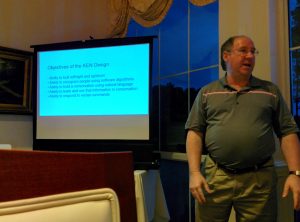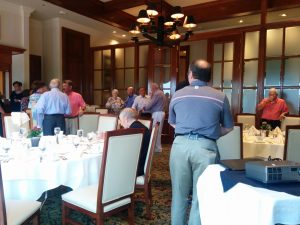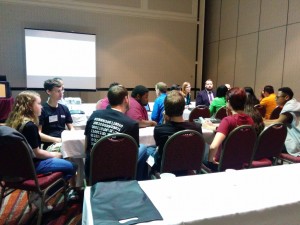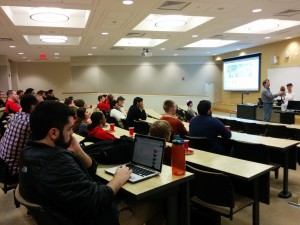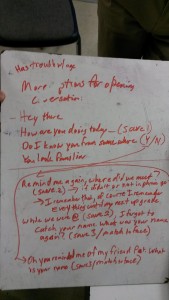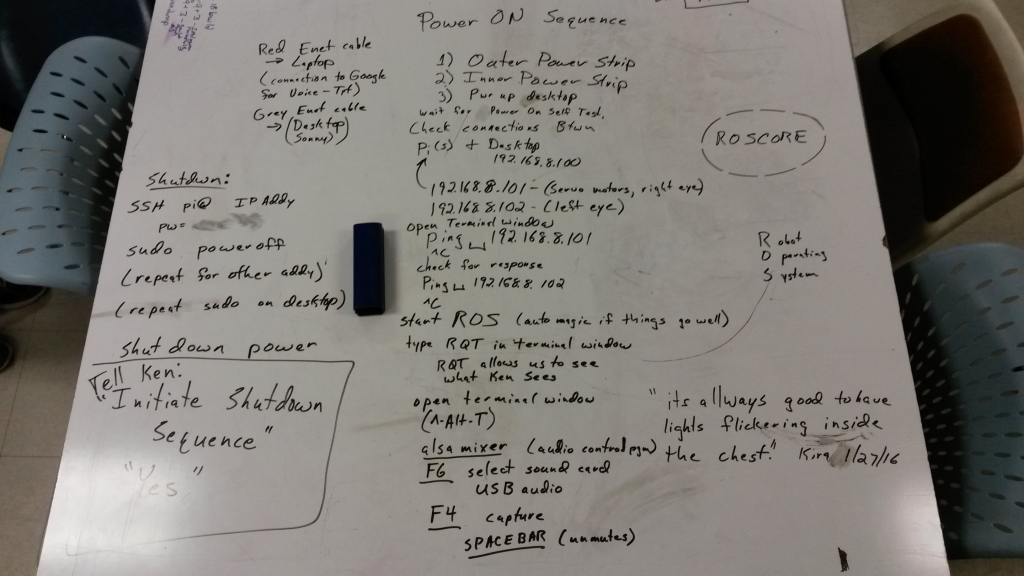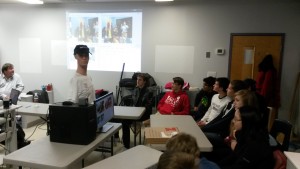Wednesday, January 20 saw the first full meeting of the Humanoid Robot Project collaboration between IEEE and The Forge Initiative. It was an exciting night with 23 attendees who were all eager to get involved with building a humanoid robot. We started with a team building exercise in the hallway where we self-organized into affinity groups according to various questions which helped us to see how different people in the group have different interests and preferences.
Our second agenda topic was an overview of the areas of focus of the project. The project is being organized around five key areas: Sculpture, Mechanism, CNS, Intelligence, and Personality. The areas are all interdependent, but each has its own skill set and objectives. Sculpture is focused on the outer skin and making a beautiful, human-like appearance. This will require artistic modeling skill from the sculptors working in this area. Mechanism is focused on bringing the robot to life by giving it power and movement. This is the hidden inner structure which makes the robot move in realistic ways. This will require electro-mechanical design and engineering skill. CNS is the central nervous system and represents the computer and communication systems required to coordinate and control the robot’s mechanisms and support its software. This area needs people with computer engineering and networking skills. Intelligence is the area where the robot’s abilities arise and are integrated through software algorithms. This is where video becomes vision and audio becomes hearing, where intent becomes motion and a thought becomes a voice. Programming and algorithm design skill thrives in this area. The final area, Personality is where all the other areas come together to make a unique robotic individual. Here is where the social interaction of the robot is sculpted through interaction design, conversation design, and gesture animation.
Following the discussion of the project areas, the students were invited to experience setting up KEN. With only verbal guidance from KEN’s creators, they set up and plugged in all of KEN’s components and started him running successfully.

We continued the meeting by breaking into affinity groups around the project areas of interest. Sculpture and Personality went to a separate room to learn more about KEN’s visible and social presence and to brainstorm ideas and enhancements to apply to the next robot to be built. Mechanism, CNS, and Intelligence stayed with KEN and received in depth, hands-on tutoring on KEN’s neck servo mechanism and software framework.


Removing KEN’s face to see the underlying structure was a highlight of this activity. Finally, the teams swapped rooms to give everyone a chance to explore all the project areas.
Everyone expressed on interest in at least one project area, and every project area had multiple people interested. All in attendance indicated that it was a fun and productive meeting and regretted that we didn’t have time to do even more.
Looking forward to next week… 

